Christmas in Pop Art: Celebrating Icons and Festivity
Christmas overflows with iconic imagery—Santa Claus, Rudolph, snowmen, candy canes, presents, and sparkling ornaments. These vibrant visuals...
Errika Gerakiti 19 December 2024
Pop Art is popping off the page with a new series of pop-up books from Poposition Press, celebrating artist Andy Warhol. We review the first release, Andy Warhol’s Pop Up Pop Art: The Silver Factory, and take a quick tour of pop-up history.
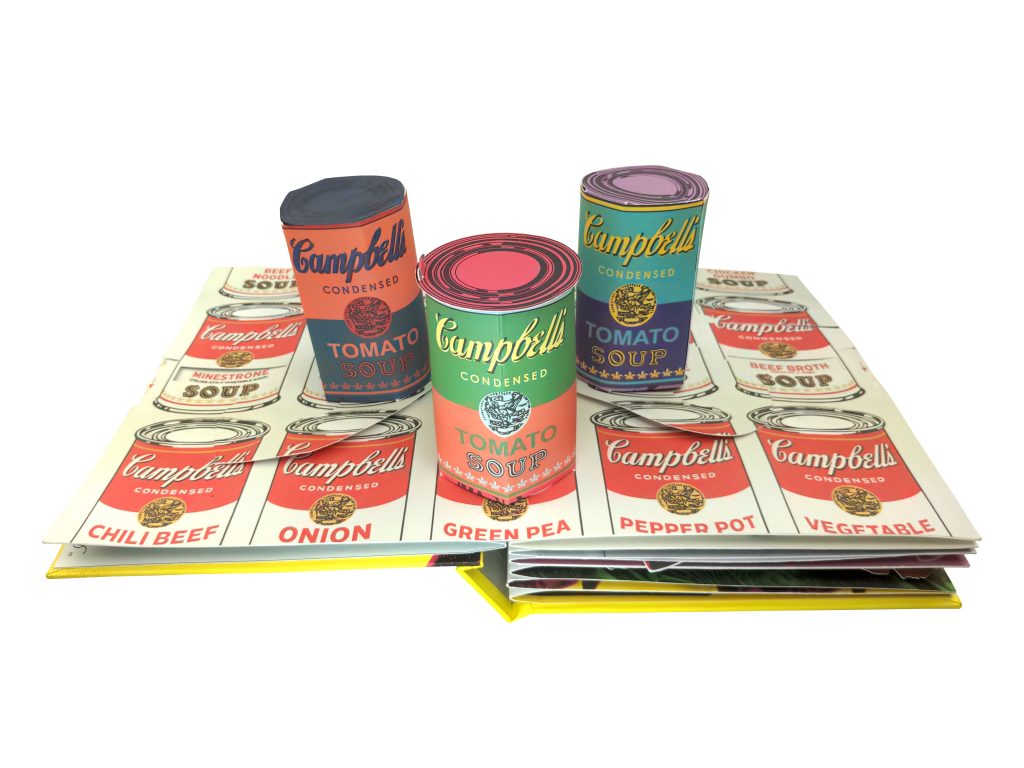
Andy Warhol’s pop-up Campbells Soup Cans, in Andy Warhol’s Pop Up Pop Art: The Silver Factory, Poposition Press, 2022.
Poposition Press is releasing a whole new series of pop-up books based on the art of Andy Warhol. Working with The Andy Warhol Foundation, art and publishing are crashing into each other to produce a series of perfect pop-up books. There will be four books spanning four decades. To be honest, the tough part of this project must have been what to choose and what to leave out.
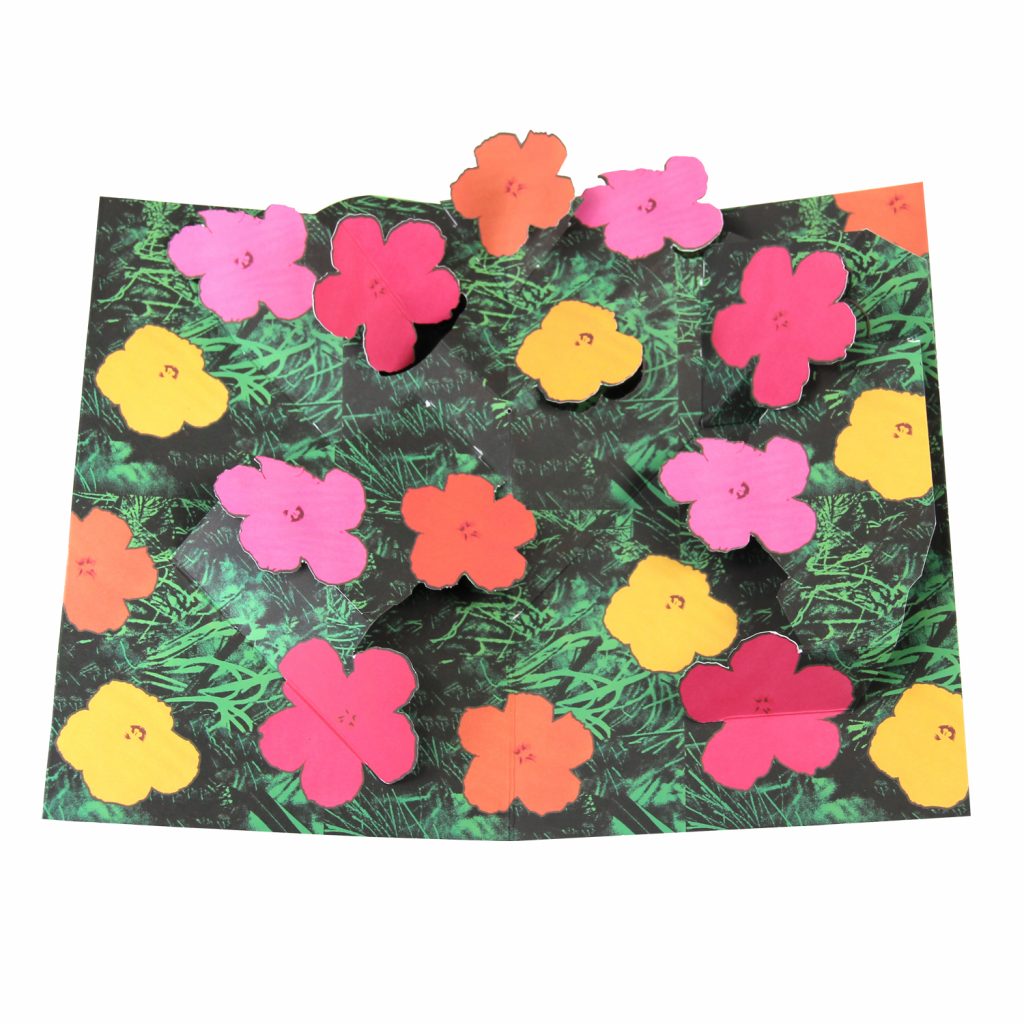
Andy Warhol’s pop-up Flowers, in Andy Warhol’s Pop Up Pop Art: The Silver Factory, Poposition Press, 2022.
Andy Warhol himself experimented with all kinds of materials: paint, screen-printing, film, sculpture, and publishing. And he was of course a prolific collaborator. This pop-up book series will showcase the career of this instantly recognizable Pop artist. Conceptual art is literally popping off the page! We think Warhol would probably approve of this latest direction for his work.
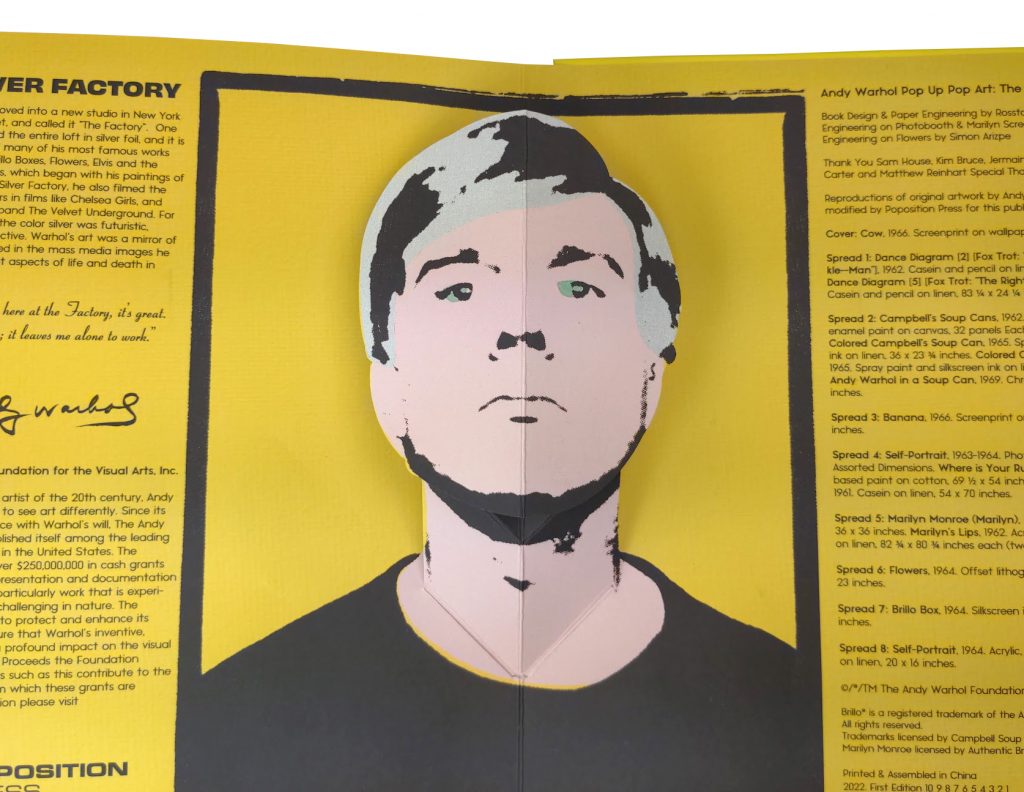
Andy Warhol’s pop-up Self Portrait, in Andy Warhol’s Pop Up Pop Art: The Silver Factory, Poposition Press, 2022.
I confess a partiality here – I adore pop-up books. Great pop-up books are brilliantly engineered sculptural artifacts, to be carefully pored over and handed down through generations. My personal favorites in the modern era include Jan Pienkowski, Robert Sabuda, and Matthew Reinhardt. Many pop-up artists have proved very collectible (and therefore sadly out of my price range!). But anyone can dip into pop-up art – maybe Warhol is a good place to start.
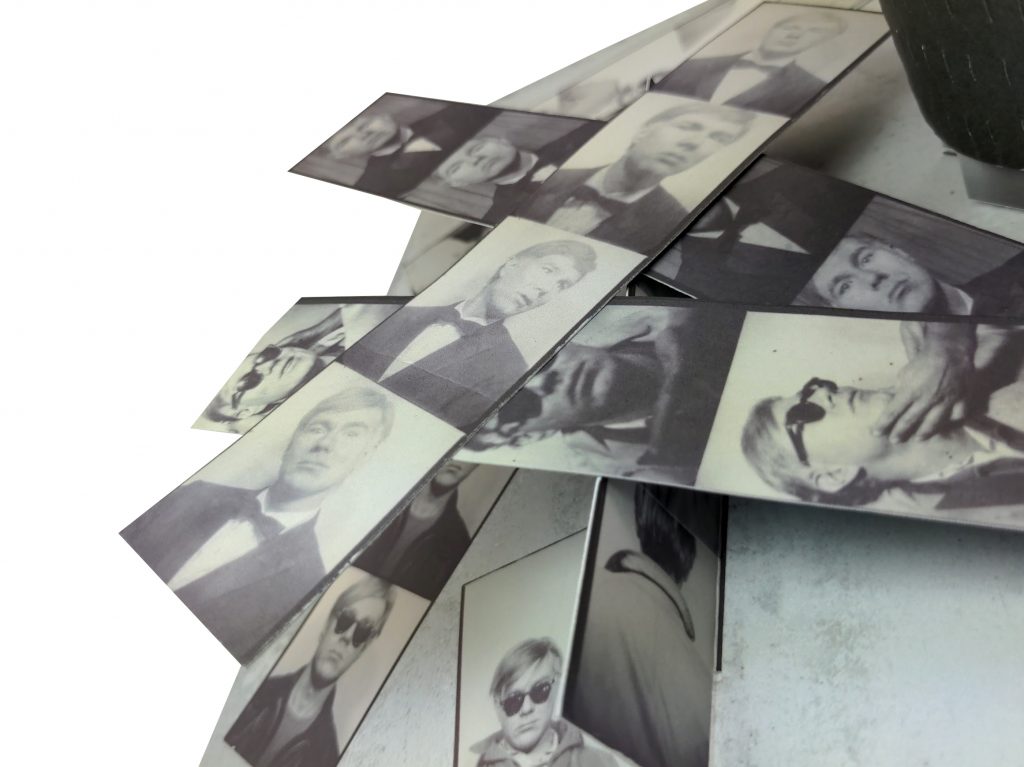
Andy Warhol’s pop-up Photo Booth, in Andy Warhol’s Pop Up Pop Art: The Silver Factory, Poposition Press, 2022
There are different kinds of movable books, and it may surprise you to know that the first of these were made in the Middle Ages and were definitely not for children!
We think that the first known movable book was created by a Benedictine monk called Matthew Paris. His Chronica Majora was created around 1240 and helped monks calculate lunar seasons and holy days. Around 1300 Catalan-speaking occultist, writer, and philosopher Ramon Llull, created his Logic Machine, composed of rotating circles of paper that answered philosophical questions on good and evil. These rotating circle books were called volvelles.
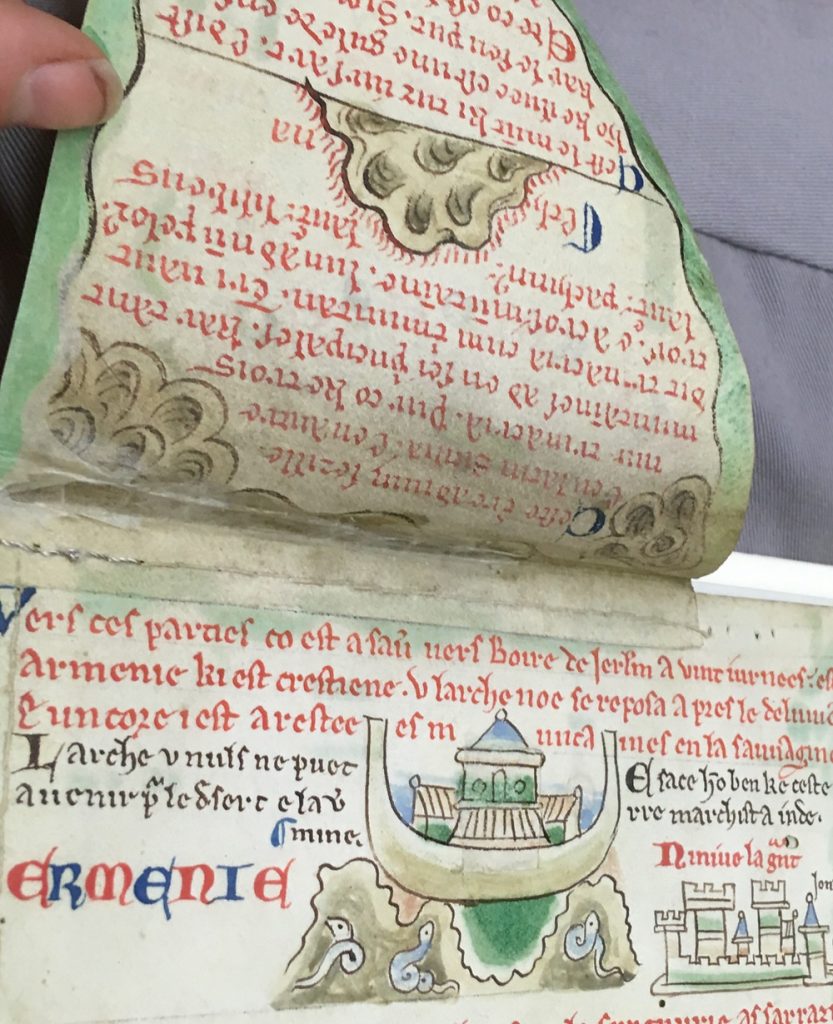
Matthew Parish, Chronica Majora, ca. 1240, Corpus Christi College Library, Cambridge, UK. Gill Partington.
Flaps that lift or vertical slats that slide allow books to show transformations. Before photography could offer an easy solution, English landscape architect Capability Brown used this system to document before and after images of his work. The medical profession got in on the act too, creating anatomical books with layers and flaps showing the human body. It is only later that pop up becomes accessible to a younger audience.
In the 18th century, English publisher John Newbery began publishing very popular fables for children in a pop-up format. And in the early 19th century German publisher Ernest Nister produced transformation books. The Metropolitan Museum of Art holds many pop-up reproductions, and the University Libraries of Washington in St Louis have pop-ups in their rare books collection.
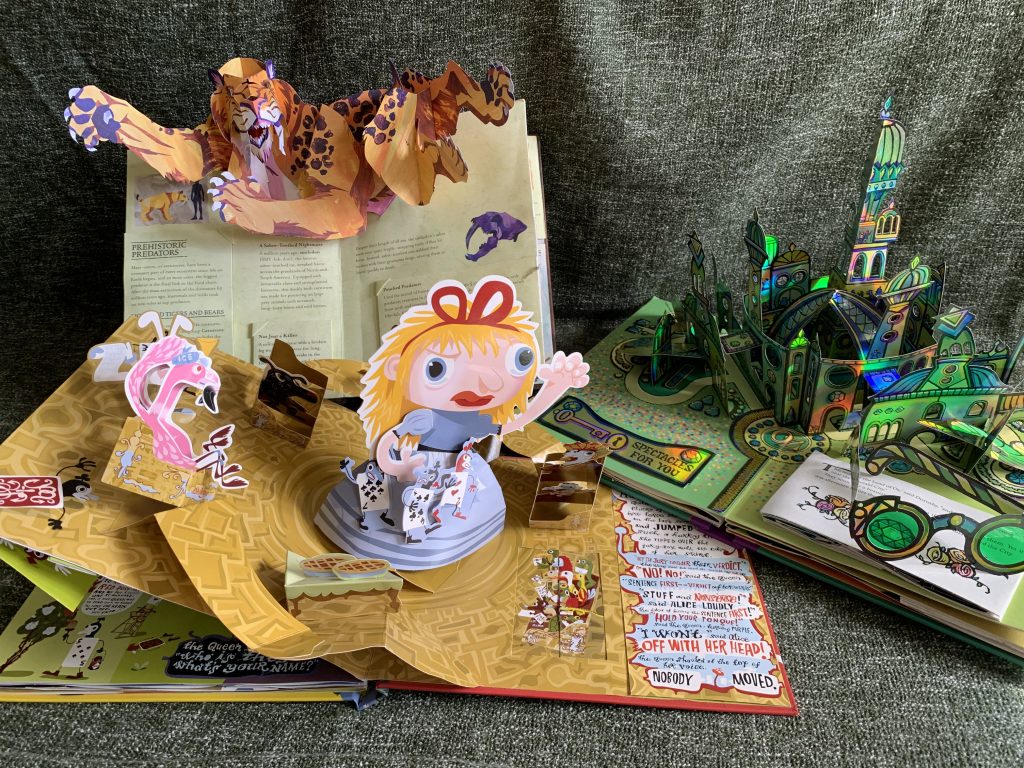
A selection of the author’s own pop-up collection. Photo by the author.
Through the 1930s and 1940s, there was something of a renaissance in pop-up publishing. Louis Giraud produced annuals for the British Daily Express newspaper and he created the Bookano Series. These did not have the detail and skill of earlier pop-ups, but as inexpensive, brightly colored books, they were incredibly popular. In America, the Blue Ribbon Books by Harold Lentz had a similar impact. Publisher Waldo Hunt took up the baton in the 1960s, employing creative engineers with top-notch technical skills.
On the flat, foursquare pages of a printed book, Waldo H. Hunt could part the Red Sea. He could make hearts beat, lungs fill and bones rattle. He could make dinosaurs rear up, ships set sail, and bats quiver in belfries.
Waldo Hunt Obituary, The New York Times, 26 Nov 2009.
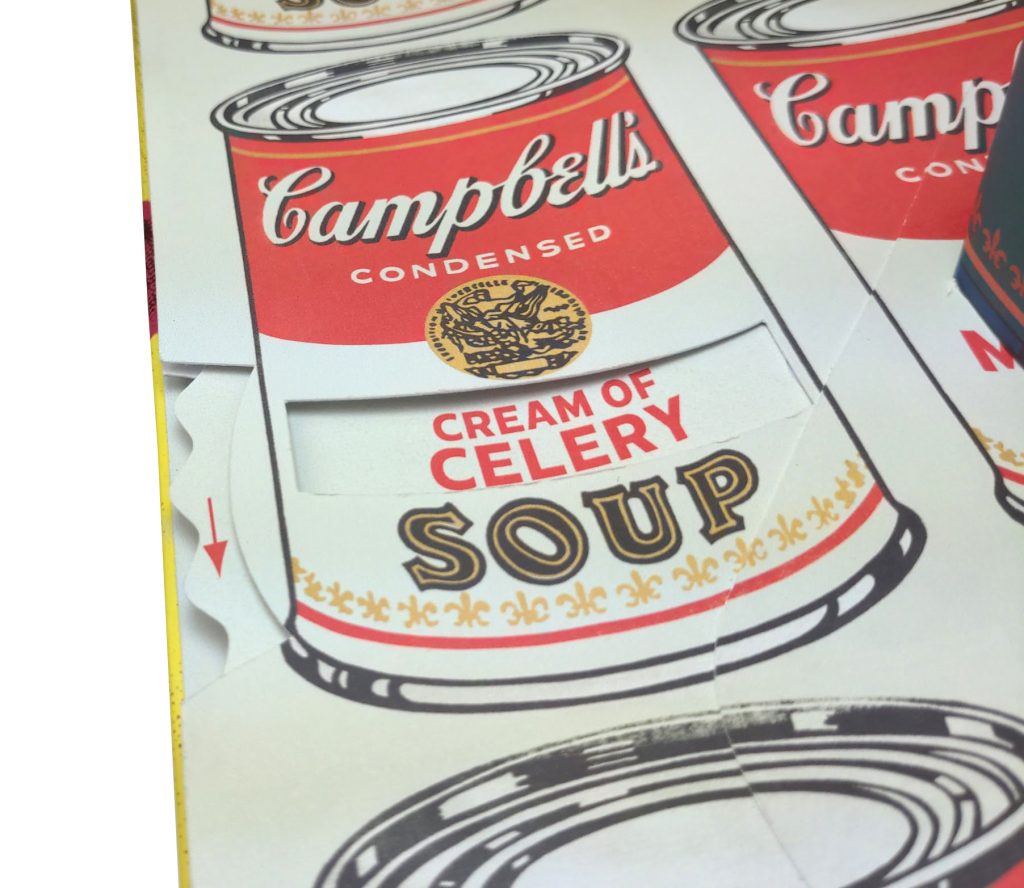
Andy Warhol’s pop-up Campbell’s Soup Cans (flavor selector), in Andy Warhol’s Pop Up Pop Art: The Silver Factory, Poposition Press, 2022.
Back to the modern day, we have Poposition Press keeping the pop up world alive. Pop Up Pop Art: The Silver Factory, is the first of the Andy Warhol book series released, celebrating Warhol’s work from the 1960s. The Silver Factory had multiple meanings – from the literal (he wrapped his studio loft in silver foil), to the space race which dominated 1960s American cultural dialogue, to the silver screen glamour icons of yesteryear Hollywood. And, of course, mirrors – providing reflections and distortions and a dash of narcissism. The Factory was a place where culture and art underwent a revolution.
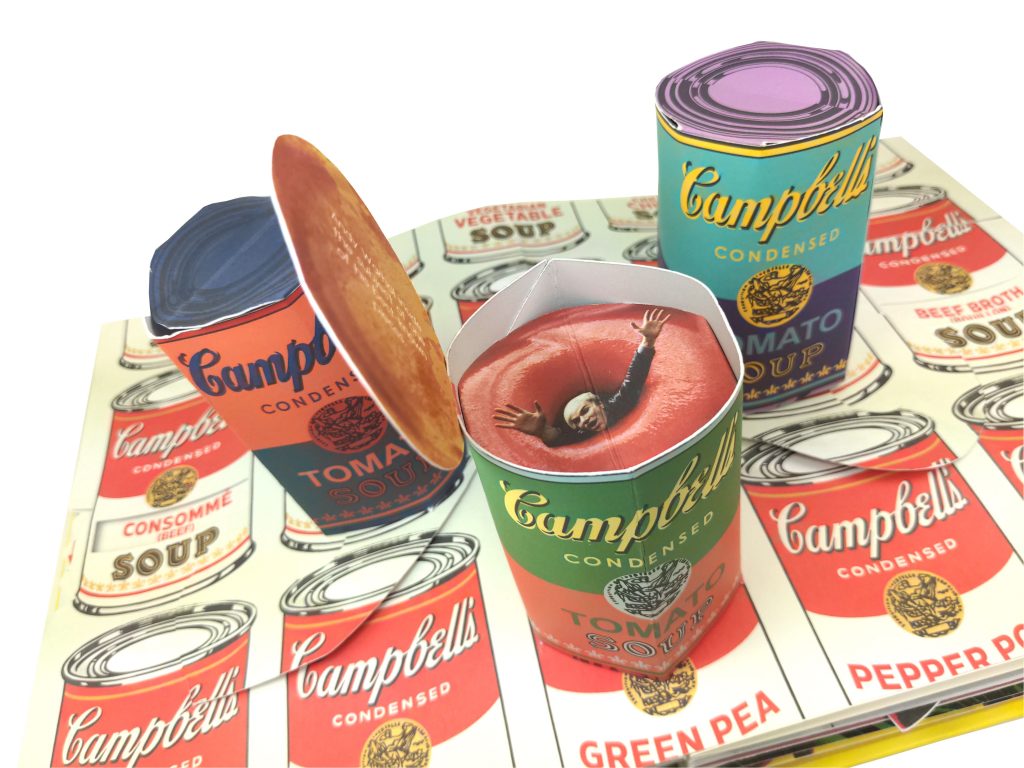
Andy Warhol’s pop-up Campbells Cans Andy Swimming, in Andy Warhol’s Pop Up Pop Art: The Silver Factory, Poposition Press, 2022.
Some of the iconic Warhol works turned into 3D include Campbell’s Soup Cans, Banana, Andy’s Photo Booth and Self Portrait, Marilyn Monroe, Flowers and Brillo Box. Now the grown-ups can unashamedly enjoy a pop up book. Paper Engineer Rosston Meyer has such a treat for you – take a look!
DailyArt Magazine needs your support. Every contribution, however big or small, is very valuable for our future. Thanks to it, we will be able to sustain and grow the Magazine. Thank you for your help!